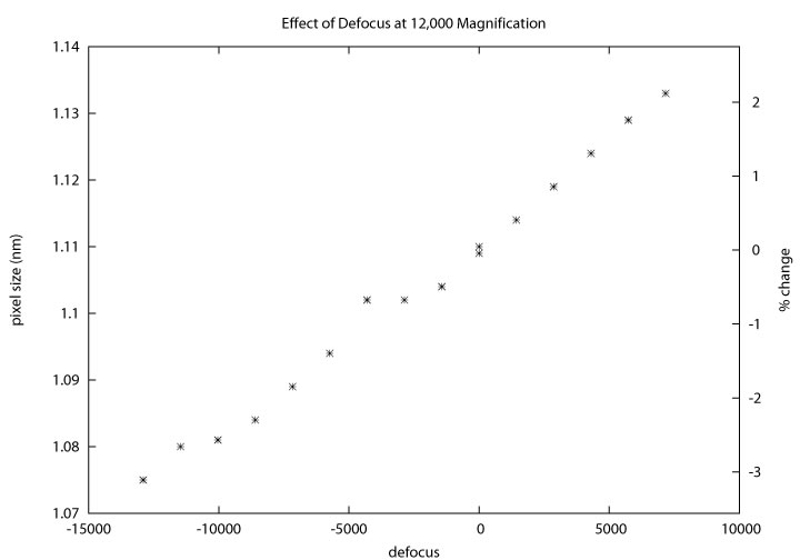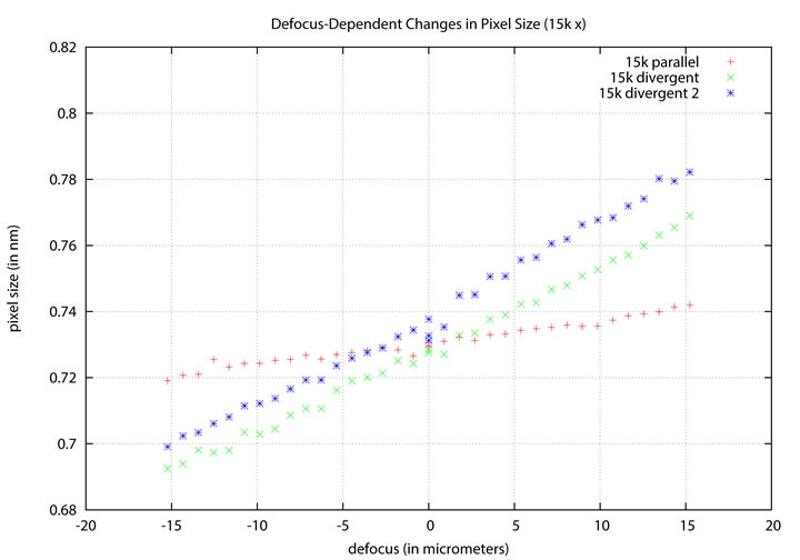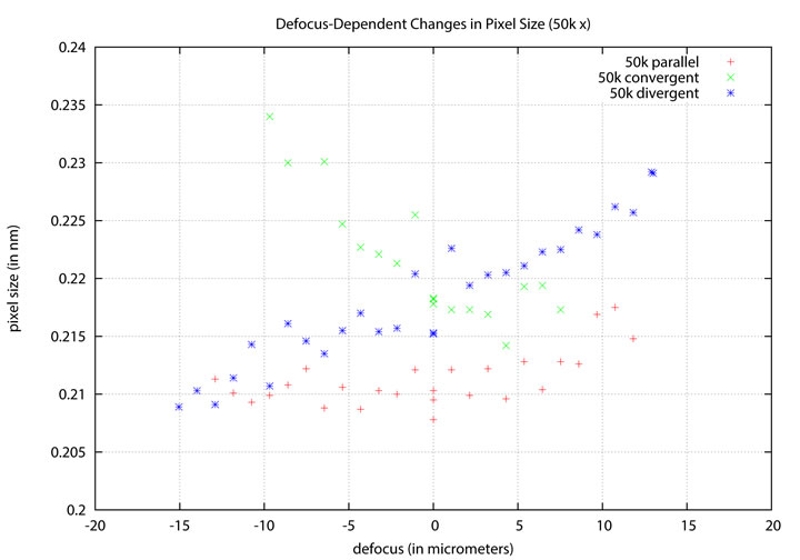Set beam close to parallel as it passes through the specimen, measure pixel size as a function of defocus using serialEM and a waffle grid and then make the beam more divergent or convergent and repeat the pixel size measurements. At this magnification, it was necessary to use serialEM's montaging capability to image enough of the waffle grid to obtain an accurate measurement of pixel size.
The variation in the data here is much larger than at the lower magnifications, perhaps reflecting the fact that it was necessary to montage images in order to obtain enough repeats of the waffle grid to allow serialEM to determine the pixel size. It is also important to consider that serialEM's montaging process depends at least to some extent on the pixel size, and that as the defocus affects the pixel size, the quality of the montages will also be effected. Indeed, at many of the larger defocus values shown in this graph, serialEM had problems doing a montage, and those problems, in turn, prevented serialEM from determining the pixel size in at least some cases.
However, even with these data as messy as they are, the overall trends shown at lower magnifications remain true: when the electron beam is near-parallel (red +'s), there are relatively small changes in the pixel size (on the order of 3%) as the defocus is changed from -13 μm to +12 μm. When the beam is made divergent (blue ⁕), the change in pixel size grows to ~9% over a defocus range of -15 μm to +14 μm. As was also seen at the lower magnifications, when the beam is divergent, the pixel size increases as the images become more and more over-focused. When the beam is made convergent (green x's), the change in pixel size is ~8% over a defocus range of -10 μm to +7.5 μm. However, when the beam is convergent, the pixel size decreases as the images become more and more over-focused.




